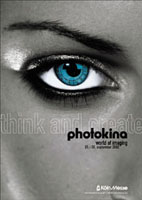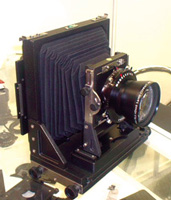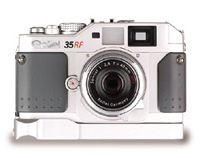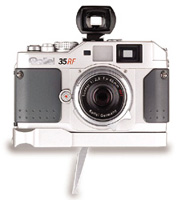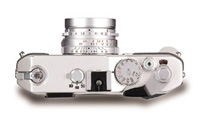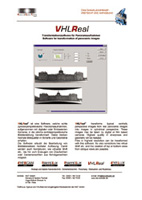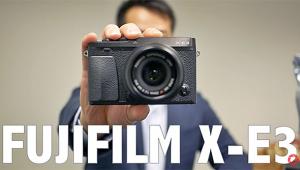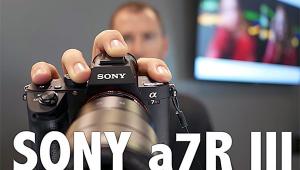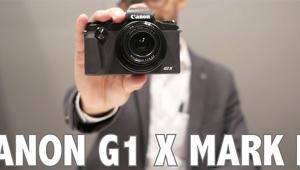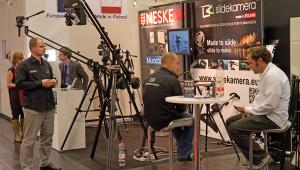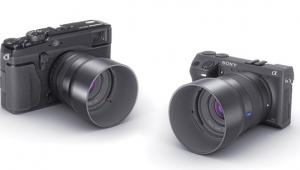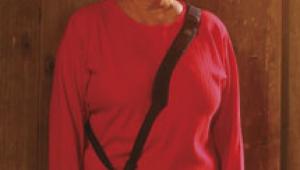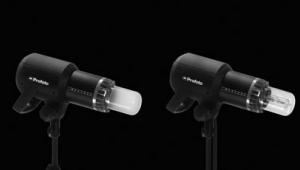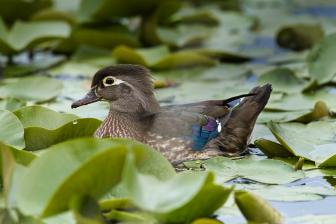Rangefinder, Large Format And Specialty Cameras
Bob Shell was covering medium
format cameras and high-end digital; Peter Burian got 35mm SLRs and point-and-shoots;
Joe Farace had other digital cameras. And I was the one who got lucky,
with rangefinder cameras, large format, and Weird Stuff. |
|||
To go with the R2S, there is
an all-new 85mm f/3.5 Apo-Lanthar, and many more lenses are now available
in Nikon S mount, including even the 50mm f/1.5 Nokton. Anyone who owns
an S-series Nikon can now integrate the new Voigtländers seamlessly
with his existing cameras and lenses. The R2C is intended mainly for those
whose Contaxes are too old or too fragile to stand up to regular use,
but who want to continue to use their Zeiss lenses: Kobayashi-san had
a 21mm f/4.5 Biogon on his R2C. I have the same lens: I was going to sell
it, but now I'm seriously tempted to buy an R2C. Mine lacks the
rangefinder coupling, but Kobayashi-san had removed the coupling on his,
too. Apparently, it's a choice between rangefinder coupling, and
through-lens metering, and as you don't really need a rangefinder
with a 21mm, the metering wins. |
|||
If you don't want
"Voigtländer" written on your camera, how about "Rolleiflex"?
There's now a Rollei version of the R2, the RF35, in silver, with
a thicker, grippier body covering and a choice of three Rollei (Zeiss-design)
lenses: 40mm f/2.8, 50mm (which wasn't there, so I don't
know the speed), and 85mm f/2.8. Like the R2S/R2C, there are three selectable
frames for the three lenses. Opinions were divided (sometimes quite
fiercely) as to which looked better, the silver Rollei or the olive
drab R2. The thick body covering of the Rollei means that the Voigtländer
trigger base won't fit (I tried mine) but there is a special Rollei
version that will. The lens mount is still Leica M-compatible and if
I bought one I'd be looking for the old 40mm f/2 Summicron and
Minolta lenses from the CL of fond memory, for the extra speed over
the Sonnar. But I think I'd rather have the 35mm f/1.2 anyway... |
|||
Large Format |
|||
At 4x5", Arca-Swiss
showed their lightest full-feature monorail camera yet at 2 kg (4.4 lbs).
On the front, there is tri-axial yaw-free tilt--as Arca said, yaw-free
may not be quite as important as some people like to maintain, but it
is better than non-yaw-free, so why not supply it--and focusing is
at the rear only. It is superbly made, like all Arca-Swiss stuff, and
it is compatible with the vast majority of the Arca-Swiss systems. It
collapses very quickly and a particularly fine accessory is a saddle-leather
"ever-ready" case which looks like a 19th century hat box.
If I didn't already own far too many 4x5" cameras, I'd
want this one, even at $3000 or so. Large Format Lenses Weird & Wonderful |
|||
And there is another staggering
expensive camera, a direct competitor for Alpa, the Wica. Built in Wetzlar
by Heiland of densitometer and enlarger-head fame, this was designed by
Matthias Schneege of Ilford. It incorporates an extremely clever lens
decentering mechanism which allows tilt, shift, or any combination thereof.
Current backs are Mamiya (up to 6x8cm) but a Linhof adapter (up to 6x9cm)
is on the way. Depending on the lens, these cameras run around $8000.
The camera on display was a prototype: the production version will apparently
have prettier grips (the ones on display were rather plain wood) and other
detail changes. I have been promised an early production sample for review;
there is no US distribution as yet. |
- Log in or register to post comments
